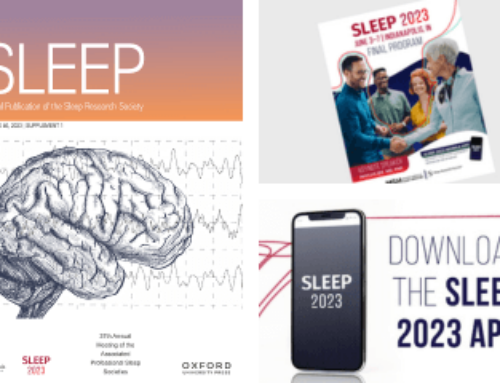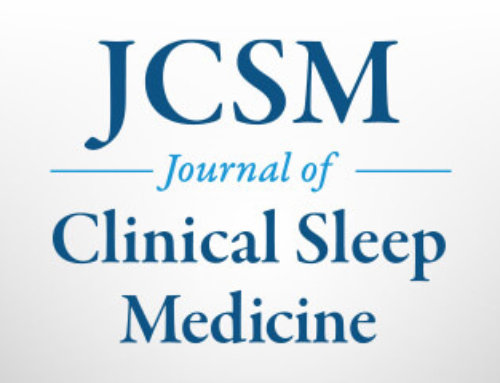Westchester, Ill.— A study in the Oct. 1 issue of the journal Sleep shows that the increased rate of follicle stimulating hormone (FSH) change that occurs during menopause is associated with increased objective sleep duration but poor subjective sleep quality.
Findings from the sleep profiles created for the study’s 365 participants indicate that postmenopausal women had deeper sleep and longer total sleep time than premenopausal women. The faster rate of change in FSH was associated with slow wave sleep and sleep duration, indicating that as women transitioned more rapidly from an endocrine perspective, they slept longer. Simultaneously, however, FSH change was associated with poorer self-reported sleep quality.
“We found that it was not the level of the FSH that was predictive of sleep, bout how quickly these menopause transition changes – FSH changes – occurred when hormones were measured over a seven-year period,” said principal investigator MaryFran Sowers, PhD, professor of epidemiology at the University of Michigan.
Women who are nearing the end of the menopause cycle, as reflected by the decreasing ratio of estradiol to testosterone, have more sleep consolidation, or uninterrupted sleep, than women who are in the early stages of menopause. Estradiol is a sex hormone that has a critical impact on reproductive and sexual functioning.
“Sleep characteristics and quality were not affected by the level of estradiol or its rate of change. We believe that this is because estradoil levels do not decline gradually in most women (as is frequently and erroneously believed), and most of the fall in estradiol levels occurs within a year or two of the final menstruation period,” Sowers said.
Menopause is a four-to-10 year multifaceted process occurring in women at mid-life and is associated with numerous factors that might trigger or exacerbate sleep disturbances.
Findings also show that women with higher testosterone (at levels that are still considered to be normal), or who are close to the completion of the transition process, have less sleep discontinuity, or waking after the onset of sleep.
Sixty-seven percent of women included in the sleep study were classified as premenopausal (no change in menstrual bleeding regularity) and early perimenopasual (menses in the preceding three months with an increase in bleeding irregularity), 21 percent were identified as late perimenopasual (menses in the previous 12 months, but not in the previous three months), and 11 percent were classified as postmenopausal (12 months of amenorrhea). The median age was 52 years and median body mass index (BMI) was 28 kg. Women slept for a median of nearly six-and-a-half hours per night of the study with a median 40 minutes of wakefulness following sleep onset.
The cross-sectional sleep substudy utilized information obtained from the Study of Women’s Health Across the Nation (SWAN) in addition to data collected for a sleep-study profile from 365 Caucasian, African-American and Chinese women. Data were gathered through objective in-home polysomnography and subjective measures such as the Pittsburgh Sleep Quality Index.
SWAN is a multiethnic, community-based, multisite cohort study of the menopausal transition. The study included a comprehensive analysis of sleep (a single sleep study that lasted for three nights) nested within an ongoing longitudinal study and was conducted at four of the seven SWAN clinical sites during 2003-2005.
The sleep study for the sleep profile began within seven days of the beginning of the follicular phase of the menstrual cycle in premenopausal women who were still menstruating. Polysomnography was conducted in the homes of participants.
Women using hormone therapy were excluded from the study, because it would confound the hormone results. Some studies provide evidence that HT can improve some, but not all , aspects of sleep quality in postmenopausal women, and it has been proposed for therapeutic use in menopausal women with sleep related breathing disorders.
The researchers suggest that clinicians whose patients include women with rapid transitions may consider interventions (therapeutic and/or lifestyle changes) that address menopausal symptoms, if any, rather than being limited to interventions that target only sleep characteristics.
Sleep is the official journal of the Associated Professional Sleep Societies, LLC (APSS), a joint venture of the American Academy of Sleep Medicine and the Sleep Research Society.The APSS publishes original findings in areas pertaining to sleep and circadian rhythms. Sleep, a peer-reviewed scientific and medical journal, publishes 12 regular issues and one issue comprised of the abstracts presented at the SLEEP Meeting of the APSS.
For a copy of the study, “Sex Steroid Hormone Profiles are Related to Sleep Measures from Polysomnography and the Pittsburg Sleep Quality Index,” or to arrange an interview with an AASM spokesperson, please contact Kelly Wagner, AASM public relations coordinator, at (708) 492-0930, ext. 9331, or kwagner@aasm.org.
###








